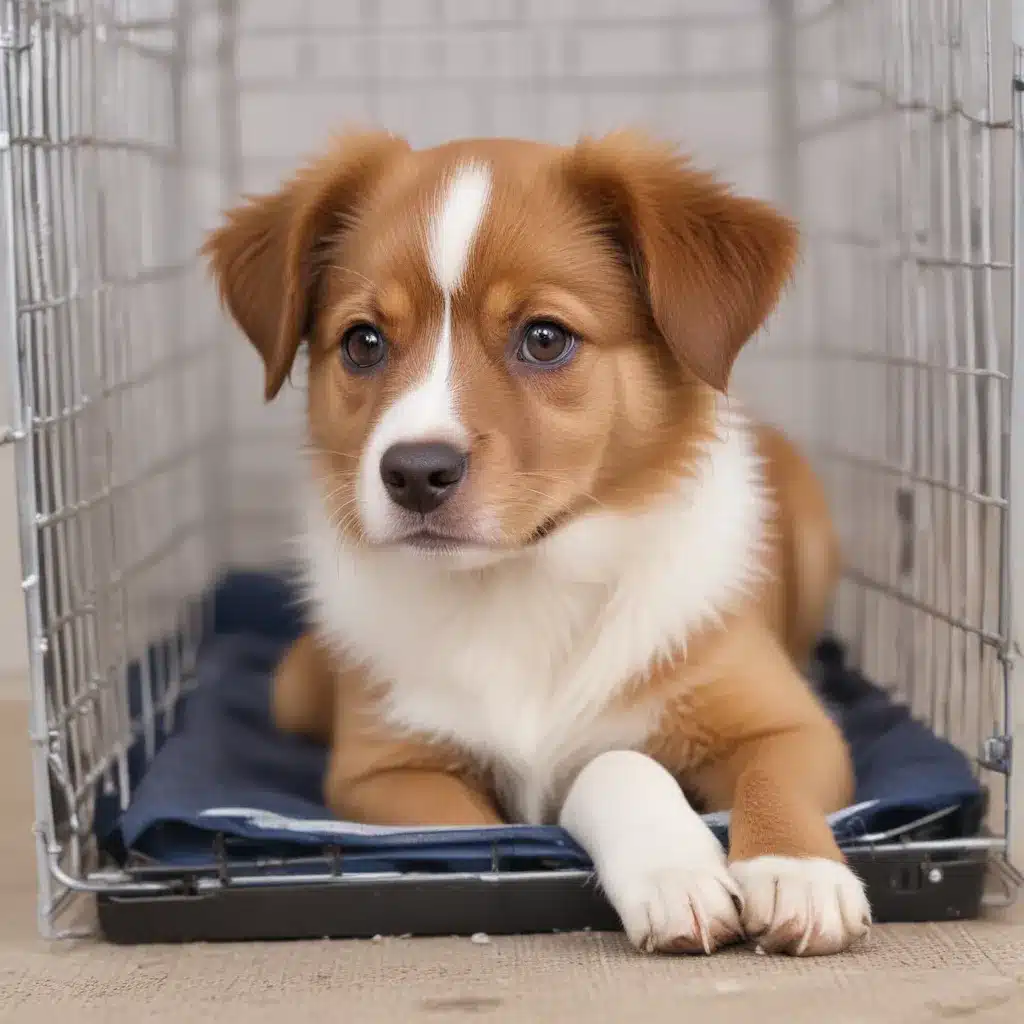
Crate Training for the Rescue Pup: A Compassionate Approach
When I brought home my first rescue, Jazzy, I had no idea what I was getting myself into. That poor girl had been through so much, and the thought of sticking her in a crate made my heart sink. But as I soon learned, crate training can be a lifesaver for rescue dogs – both figuratively and literally.
Adopting a rescue comes with its own unique set of challenges. These pups have often endured trauma and unspeakable hardships, which can make the transition to a loving home quite difficult. But with the right approach, even the most crate-shy rescue can learn to embrace their very own “home-within-a-home.”
Choosing the Perfect Crate
Before you even think about introducing the crate, you’ve got to make sure you’ve got the right one. Size is key here – you want something that’s just big enough for your pup to stand up, turn around, and lie down comfortably. Anything larger, and you run the risk of your rescue using one end as a bathroom and the other as a bed.
As the folks at Rescued Dog Home recommend, get a crate that’s sized for your dog’s adult dimensions, not their current puppy-self. That way, you won’t have to upgrade as they grow. And if you’ve got a puppy rescue, consider getting a partition to section off the extra space until they fill it out.
When it comes to materials, both plastic and wire crates can work well. I personally prefer the wire variety – they just feel a bit sturdier and more secure to me. But the most important thing is making sure the crate has two latches, not just one. Believe me, a determined pup can bust out of a single-latch crate in no time flat.
Getting Them Comfortable
Okay, so you’ve got the perfect crate all picked out. Now it’s time to get your rescue acquainted with their new den. The key here is to take things slow and make the experience as positive as possible.
As the team at Diamond Pet Foods suggests, start by simply leaving the crate door open and letting your pup explore at their own pace. Toss some yummy treats inside to pique their curiosity, and maybe even put one of your well-worn shirts in there to help the space smell familiar.
Once Fido starts warming up to the crate, you can begin feeding their meals inside. Start with the bowl just inside the entrance, then gradually move it farther back as they get more comfortable. The goal is to create a positive association between the crate and good things – like delicious food and safety.
Crate Training Step-by-Step
Alright, time to start the real training. As the experts at I Have Dogs recommend, the key is to take things one small step at a time. Begin by simply calling your pup to the crate and rewarding them when they go in. Then, close the door for just a few seconds before letting them out.
Gradually increase the time your rescue spends in the crate, always making sure to give lots of praise and treats when they display calm, relaxed behavior. If they start to whine or get upset, resist the urge to let them out – that will just reinforce the behavior. Instead, wait for a quiet moment before opening the door.
Pro tip: Don’t make a big fuss when you leave your pup in the crate. A simple “be right back” and a calm demeanor will go a long way in keeping them cool, calm, and collected.
Dealing with Crate Challenges
Of course, not every rescue is going to take to the crate like a duck to water. In fact, some may downright refuse to go near the darn thing. And that’s okay – we’ve all got our quirks, right?
If your pup is really struggling, try covering the top and sides of the crate to create a more den-like feel. As the experts at Spirit Dog Training suggest, this can help make the space feel safe and secure. You can also try putting a piece of your clothing inside to help them associate the crate with your comforting scent.
And if the whining, chewing, or other destructive behaviors just won’t quit? It might be time to try a different approach entirely. As the trainers at Chaos to Calm K9 Training recommend, alternatives like tethering, dog pens, or designated “safe rooms” can sometimes work better for our more anxious rescue pups.
Patience and Perseverance
At the end of the day, crate training a rescue dog isn’t easy. It takes time, consistency, and a whole lot of patience. But I can assure you, it’s so worth it. Not only does a crate provide a cozy retreat for your pup, but it can also be a literal lifesaver in emergencies or vet visits.
Remember, every rescue is different, and what works for one pup might be a disaster for another. The key is to pay attention to your dog’s unique personality and needs, and be willing to adapt your approach as necessary. With a little creativity and a whole lot of compassion, even the most crate-shy rescue can learn to love their very own “home-within-a-home.”
So hang in there, my fellow rescue parents. The journey might be a bumpy one, but the destination – a happy, confident, and well-adjusted pup – is so, so worth it.

